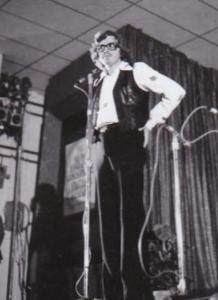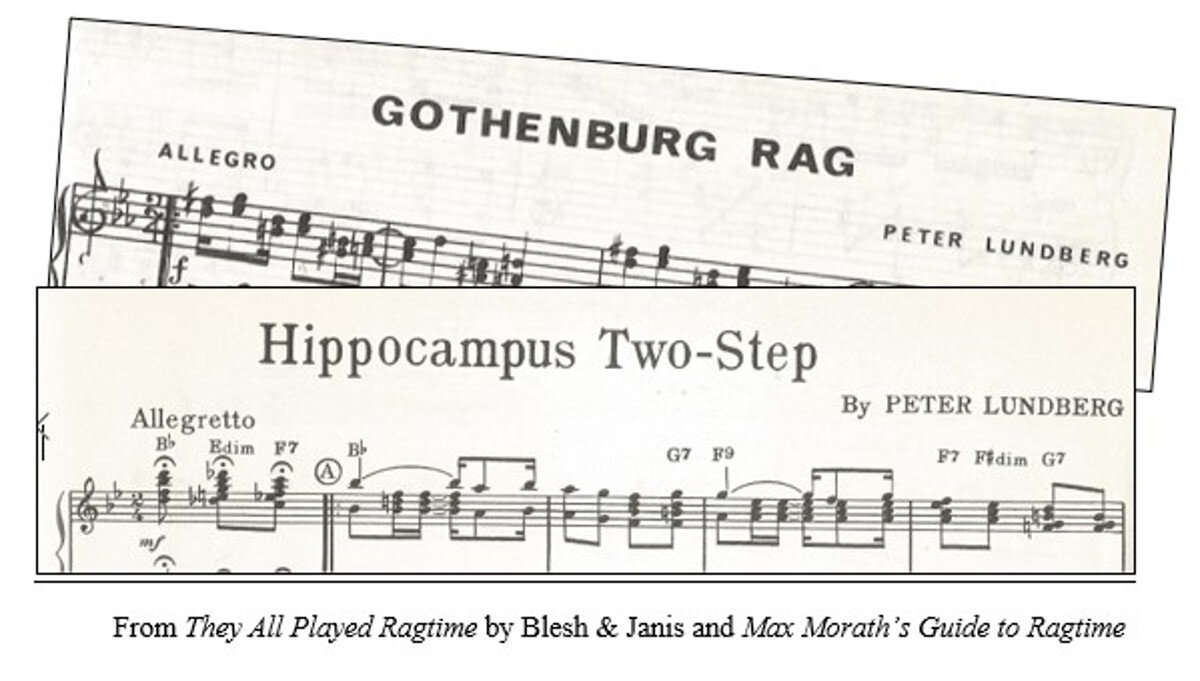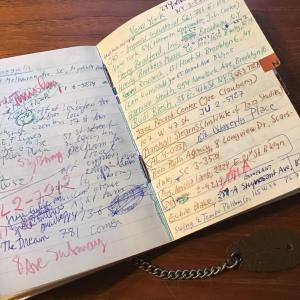One of the great ragtime adventure stories I ever heard was of Peter Lundberg’s tour of America in 1963, vising and interviewing ragtime greats across the country. Peter graciously shares his story with TST readers in this issue. He originally prepared this account at the suggestion of Lucille Salerno for a Blind Boone Ragtime Festival in Columbia, Missouri. Lucille has been encouraging composers and performers for decades and we owe her our gratitude for this and her many other contributions to ragtime.
As you will read, he learned of ragtime in Sweden as a boy and studied all he could about the music, the composers, and the performers. It is an epic story and I first learned of Peter’s tour when I met him at the first Sedalia ragtime festival in 1974, a full decade after his trip.

Everything about his pilgrimage intrigued me, and though we are about the same age I saw him as a larger than life folk hero. I have greatly admired him and his contributions to the international ragtime community all these years.
Peter is a distinguished student of the music and of ragtime’s heritage and has gone to great lengths to further his knowledge and acquaintance with the composers and performers living in his generation and before. He is a talented performer having studied and worked at length with a variety of great musicians. Furthermore, he is an accomplished composer.
You will be reading Peter’s account in this issue of TST. I have been so anxious to see it in print and am excited to introduce it in this column. As you will read, Peter and his mother raised the funding for their trip for two years while Peter corresponded with all the great personalities he only knew from recordings and by reading everything he could find on ragtime.
The travelers quickly discovered that they could buy a three-month Greyhound bus pass for $99 and thus criss-crossed the country looking up ragtime composers, performers, and historians as they desired. Later Peter was impressed when he learned that the innovator of the Greyhound Bus Line in 1914 had been Carl Eric Wickman, a Swedish immigrant.
Peter had not only accumulated a lot of information about American ragtime before his tour, he was composing some fine pieces in syncopation before he came. In addition, I quickly learned when we first met, that Peter could even out do my own collecting of ragtime ephemera and over the years, he has impressed me by the amazing items in his atelier.
Peter’s descriptions and comments about people and about music are forthright, honest, and often very frank. He discusses music from his vast knowledge of ragtime and also from his own musical references which he states candidly. He recently shared with me that he feels ragtime, “was a strikingly individual music from a striking era…I am content to let it be this sound that I want to return to now and then, like looking at old postcards or reading old letters.”
I thought it would be interesting to see what some of the living legends of ragtime remember about meeting Peter in 1963. Fred Hoeptner recalls that he was at home at the time of Peter’s visit and I am reminded of Fred’s long study of musical history and of his own skill at ragtime composition. Peter was impressed by Fred’s earlier composition titled, “Sedalia,”
Max Morath was excited to hear Peter’s narrative would be available as he had a vivid memory of their first meeting at the Morath home outside of Denver. The following year he published Max Morath’s Guide to Ragtime: A Collection of Ragtime Songs and Piano Solos (Hollis Music, Inc. 1964), and included Peter’s composition “Hippocampus Two-Step.” Max wrote informative notes throughout the folio and in the section titled, “Ragtime Today,” he wrote admiringly of Peter’s tour and of his composition Max wrote, “A creative and mature extension of the classic ragtime style.”
Peter also impressed Rudi Blesh during his New York visit, with compositions written in Sweden. So much so, that Rudi included Lundberg’s “Gothenberg Rag,” in his paperback edition of They All Played Ragtime (Oak Publications, 1970).

Peter toted his camera and tape recorder all over America that summer experiencing and learning about the music he had discovered as boy. His dependable mode of transportation was the faithfully on-time Greyhound bus; his Argo, his Rocinante (Steinbeck’s not Quixote’s), his Ghost Dancing.
Readers will be fascinated by all Peter accomplished and by the legends he met in the decade that would culminate in a national revival of ragtime interest. The small black book he carried recording appointments, contact information and hastily written notes is one of the great pieces of ragtime ephemera and for me, it is the logo for the story. Peter humbly makes light of his adventure. For me, his story is the stuff of epic poems, perhaps even an opera or great syncopated symphony.
Larry Melton was a founder of the Scott Joplin Ragtime Festival in 1974 and the Sedalia Ragtime Archive in 1976. He was a Sedalia Chamber of Commerce manager before moving on to Union, Missouri where he is currently helping to conserve the Ragtime collection of the Sedalia Heritage Foundation. Write him at lcmelton67@gmail.com.






















